Track saw rails and jigs
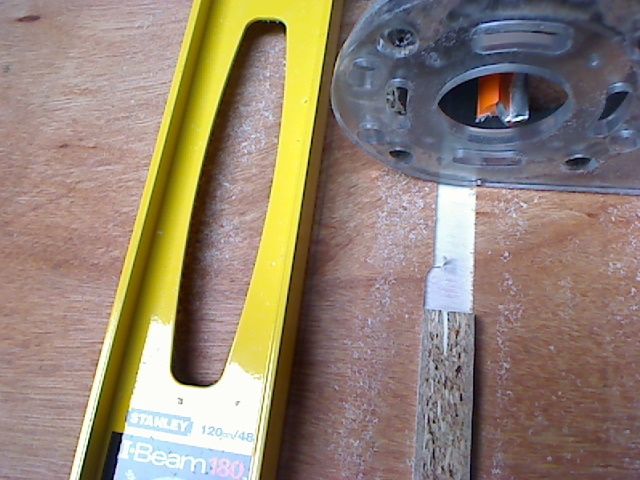
Straight edge and router, cutting the groove for the ridge piece. I stopped the process in the middle of the second pass, so you can see the groove being sized to fit the melamine faced chipboard.If you know the difference in the width between your ridge piece and your cutter, you can set the straight edge with a shim piece between it and the router, then the second cut is made without the shim.
Of course, if you have a woodworking chum who has a dado set in his table saw, you could do it that way as well.
First things first.
1. I am an engineer for DeWalt and I work in the factory that makes our track saws. So, I have only used our track saws for both the jigs I’ll show, and the work I do. I am biased 🙂 I also might get in trouble sharing some of this, due to various clauses in my employment contract.
2. I have a very small workshop, 6sqm, so I don’t have room for a tablesaw. I am biased 🙂
If either of these trouble you, don’t read any further. I have tried to avoid being discriminatory as much as possible, but I am just as enthusiastic about the tools we make as I am about the projects we make with them.
I just finished reading the track saw review, and watching the video of the track saw cross cut table. I thought I would show some of the jigs I have created over the years I have been using the tool. I consider the track saw to be one of those tools that is extremely useful for beginners, and for people with small shops or small budgets.
First thing I’ll say is that the accessory rails and accessory attachments that are for sale with track saws from any manufacturer are not fundamentally bad. They are however expensive. That is why a lot of my jigs are built using homemade tracks.
As well as the cost and versatility advantage, homemade tracks are easier to mount edge guides to for ninety degree cutting, angled cutting (drill a countersink pilot hole through the ridge, screw an edge guide on, set the angle, fire a couple of brads through the track), and you can use screws or brads for positioning with far more impunity.
The track is very simple to make. First you need to measure the width of the groove on the bottom of your saw. Some saws will come with some form of adjustment mechanism for truing the saw to the rail. Use this to your advantage.
Take some 6-8 mm plywood that is flat, use a router and a straight edge (This straightness is probably the most critical part of this exercise) to cut a groove of a reasonable length for how you intend to use the rail (Short rail lengths if you want to make cross cutting jigs to use the track saw as a mitre saw, longer lengths if you want to use the saw for rip applications). The width needs to be conveniently close to the width of the groove in the base of your saw. If you box clever, you should also be able to find some man made material such as melamine faced chipboard to use as the ridge on the rail (which is why you should understand the range of any truing adjusters), and then make the groove in the plywood to accept this as well. (This is just one way to do this, you could equally as well use a hardwood, or a plywood piece, and you could cut it higher than need be and then reduce the height with a router on a ski jig.)
Glue the ridge part in to the groove you just routed and let the glue set. Put the track saw on the ridge, adjust the truing adjusters as necessary, so that the saw moves along the rail freely, and has no twisty play in it. Now, pull the saw to one end of your ridge, plunge, and cut as far as the other end of the ridge (remember to do this with the track on top of a piece of scrap material!). Turn the saw 180 degrees, and cut back. Then you can handsaw or jigsaw the rail free. Sand the running surfaces, wax them, put some duct tape, or similar on the underside to reduce slip, and there you are.
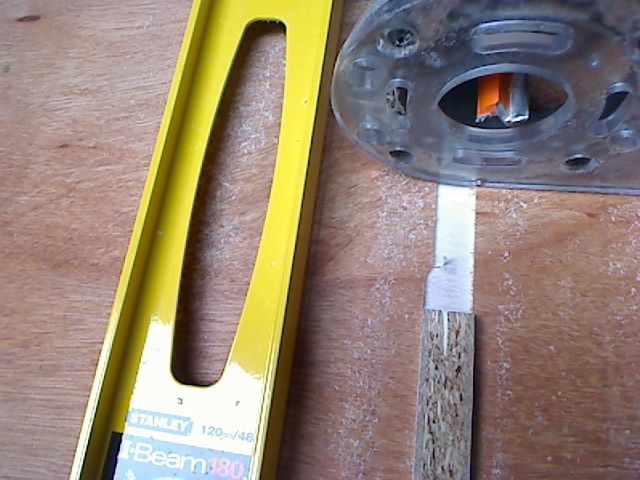
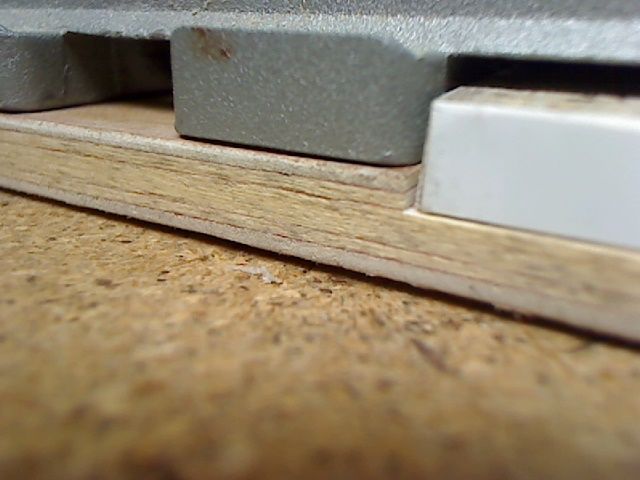
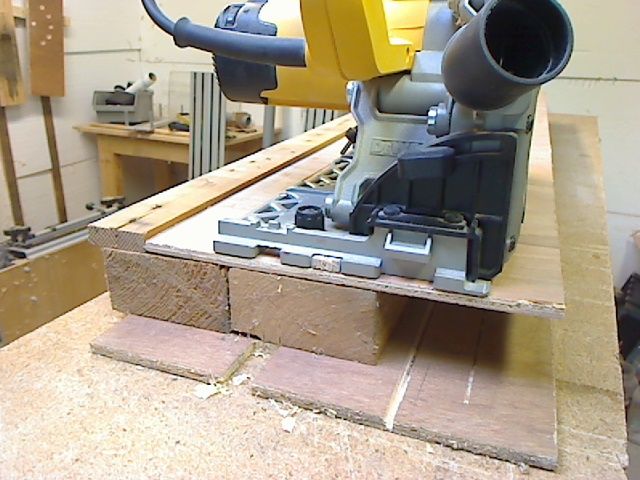
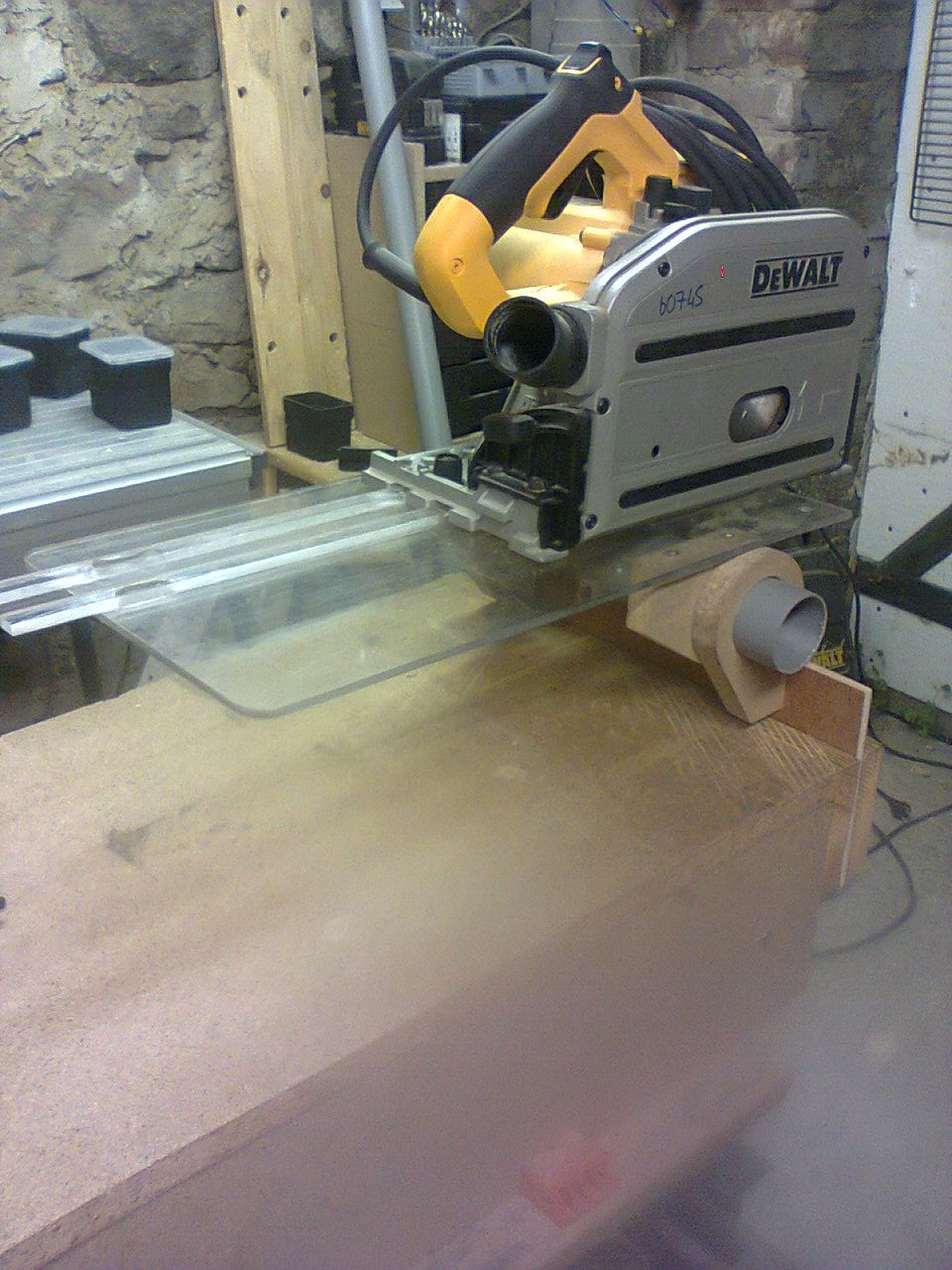
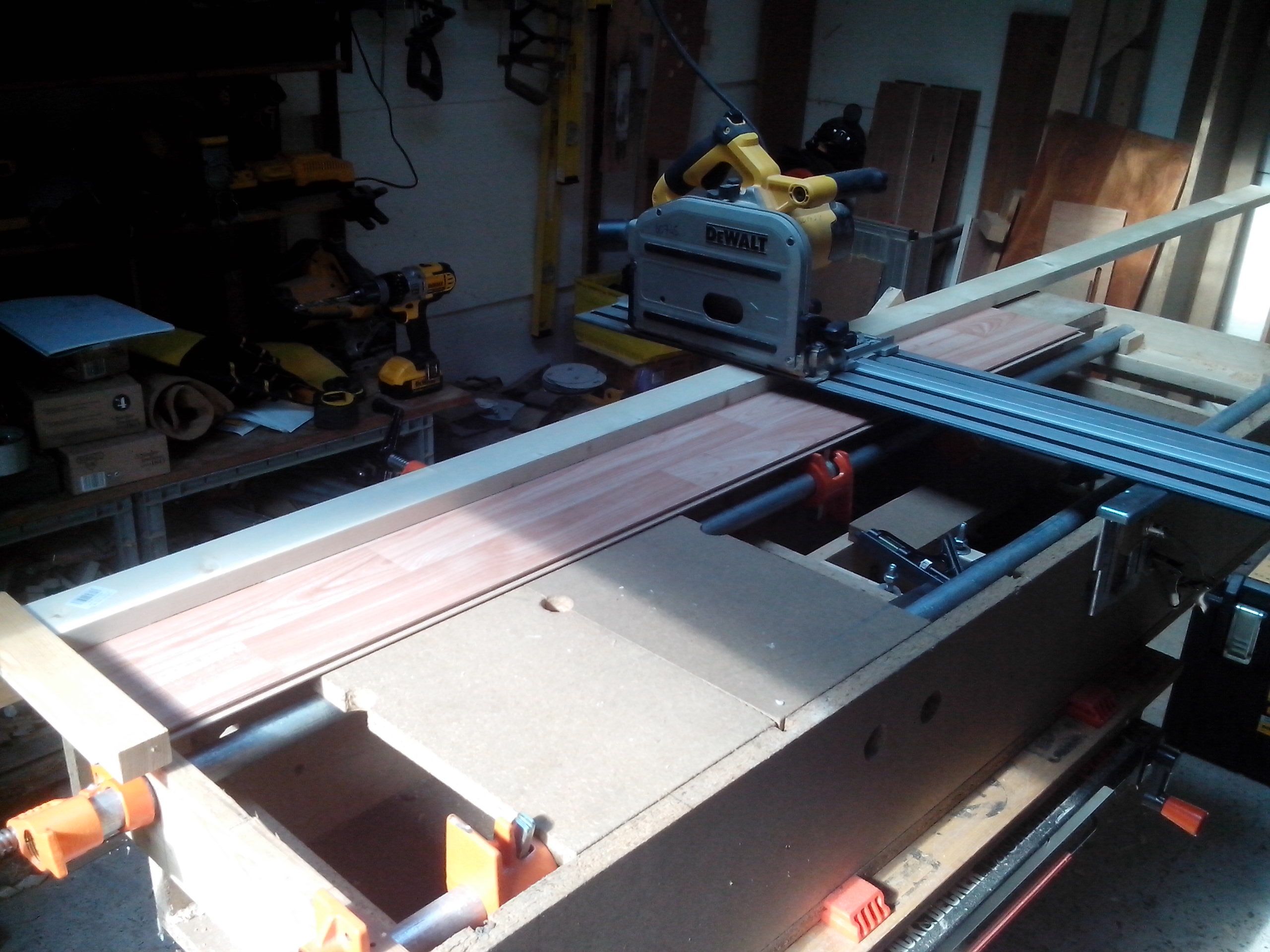


















Log in or create an account to post a comment.
Sign up Log in